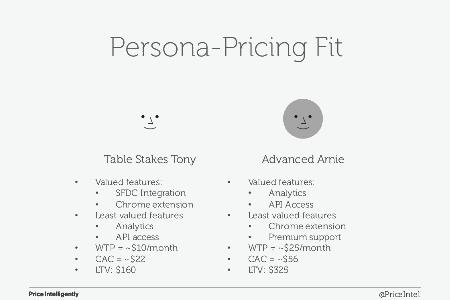Growing MSP Profitability With Smarter, More Strategic Pricing

By Patrick Campbell, Founder and CEO, Price Intelligently
When you’re in the trenches of building your business, there’s a lot going on — acquiring customers, keeping them happy, and ultimately making sure you’re making enough money to survive. Unfortunately, in all the hustle and bustle, we end up losing sight of an extremely important aspect of our business that could make most of our troubles vanish: our pricing.
Seems like an obviously important part of your business, right? Well, we’ve found through a survey of over 1,500 business owners the total amount of time teams typically spend on their pricing strategy is around eight hours ... in the entire history of their business.
Not focusing on pricing has real impact, too, because pricing is the lever that has the highest impact on your bottom line. Essentially, if you get your pricing right, you don’t need to spend as much time and frustration on other areas because you’ll be lean and profitable. I recently participated in a pricing strategies webinar and conducted a three-hour pricing workshop at Navigate 2016, Continuum’s third annual user conference, which took place in Boston in September. To help MSPs get pricing on track, I shared a few key areas to revisit immediately.
Stop Pricing On Margin, Start Pricing On Value
First up, stop pricing based on margin. That’s blasphemy in the MSP space, but if you’re pricing on margin you’re likely missing out on a significant amount of profit, mainly because you’re arbitrarily setting your value.
Put another way, customers don’t care about your costs, they care about their costs. The implication here is you may have a product that costs you $50 per month to serve, but in actuality you could charge $500 per month because the customer sees that much value in what’s being provided.
Now, pricing on value doesn’t mean you don’t keep your costs in mind. Yet, value-based pricing does mean, rather than focus on your costs as the basis of your price (or your competitors), you look to your customers and base your pricing on data directly from them. If you find the customer’s willingness to pay or interest in a particular product isn’t going to cover your costs or work overall, then direct your focus elsewhere.
Price Based On Your Quantified Buyer Persona
Pricing on value sounds great, right? Yet, how do we actually do that? Value based pricing starts and ends with what’s known as your buyer persona. A buyer persona (or personas) is essentially the profile of your target customers that can be used as a central fulcrum for settling arguments and making decisions.

Getting your buyer personas in tip top shape is a much more in-depth process than we have space for here, but there are two axes of data you’re going to collect to properly quantify your buyer persona: willingness to pay data and feature value data.
Willingness to pay data gets to the heart of where you can properly price a product for a given persona. There’s an in-depth explanation here, but essentially go out to your customers, prospects, and target customers and ask them in a targeted manner. The output looks something like this and provides the ability to truly know the pricing pulse of your customer:

The other important type of data is feature value information, or relative preference data. This data allows you to know what features, value propositions, etc. your customers truly value, which is important for making sure you’re aligning your packaging properly. Here’s another in-depth explanation of how to collect this data, but you can see in the output below some very clear paths of what’s important and what’s not. All of this data combines to make sure you know which customer(s) to focus on and which to likely avoid.
Price Along A Clear Value Metric
One final, more tactical piece of feedback is to make sure you’re pricing on the right value metric. A value metric is what you charge for; per user, per device, per whatever. If you have all-in pricing, you’re likely missing out on a significant portion of revenue because you want to make sure customers are paying you if they increase usage. This also makes sure you’re not charging a large customer the same price as a small customer. Ultimately, make sure it’s easy to understand, aligns with where your customer sees value in your product, and expands with your customers’ usage.
Pricing’s Important. Take It Seriously
There’s a lot we can get into in terms of pricing — discounting strategy, positioning, etc. The biggest point here is to take it seriously, because it’s something that ultimately sits at the center of your business and has the most impact. For more resources, check out all the free resources at the Price Intelligently pricing blog. To download the recording of a recent webinar hosted by Continuum that feature these pricing strategies, visit: https://page.continuum.net/webinar-managed-it-services-pricing-strategies.
Patrick Campbell is the Co-founder and CEO of Price Intelligently, the team and software behind some of the biggest and best SaaS pricing strategy out there from companies like Atlassian and Autodesk to Wistia and Litmus. PI is also the maker of ProfitWell, which is free financial metrics for subscription businesses. Prior to Price Intelligently, Patrick led strategic initiatives for Boston-based Gemvara and was an economist at Google and the U.S. Intelligence community.
